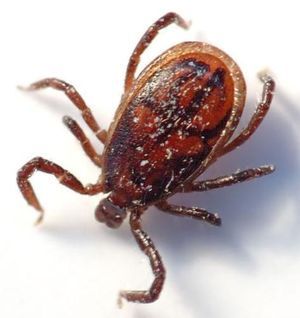HARLINGEN — The cattle fever tick situation in South Texas continues to worsen.
The Texas Animal Health Commission, which confirmed a single occurrence of a cattle fever tick in Live Oak County in November, says the ticks have spread to seven additional ranches and properties there.
The northward march of the cattle fever tick is a serious concern to ranchers and state and federal officials. While the tick is endemic to Mexico, and commonly crosses the border into the Rio Grande Valley, it has been years since it has moved north so rapidly.
At stake is the $11.7 billion a year Texas beef industry, threatened by a parasite the ticks can carry which causes babeosis in cattle, which can lead them to lose weight or even die.
The major question still to be answered is how the ticks arrived in Live Oak County, more than 100 miles north of the permanent cattle fever tick quarantine zone along the Rio Grande which stretches from Del Rio to Brownsville.
Thomas Swafford, a spokesman for TAHC, said via email Tuesday that no transmission vector has been identified.
Cattle fever ticks also are carried by free-roaming white-tailed deer and nilgai antelope. Yet the ranges of those animals are actually quite small, and it seems unlikely they are responsible for the outbreak in Live Oak County.
Swafford said epidemiological testing is being conducted, but it could take some time before officials determine how the cattle fever ticks reached Live Oak County.
Officials at TAHC said there were several other possibilities for the northward spread of the cattle fever tick, including the possibility ticks may have been attached to cattle, horses or exotic livestock shipped into Live Oak County.
To monitor the spread of the cattle fever tick, and attempt to contain it, Control Purpose Quarantine Areas have been assigned to Live Oak and six other counties, including Jim Wells, Kleberg, Starr, Webb, Willacy and Zapata counties.
A Temporary Preventative Quarantine Zone has been designated for Cameron County. A strip of land in Cameron County along the Rio Grande is in the Permanent Quarantine Zone.
At present, there are now approximately 541,462 acres in South Texas under various types of fever tick quarantine outside of the Permanent Quarantine Zone.





